
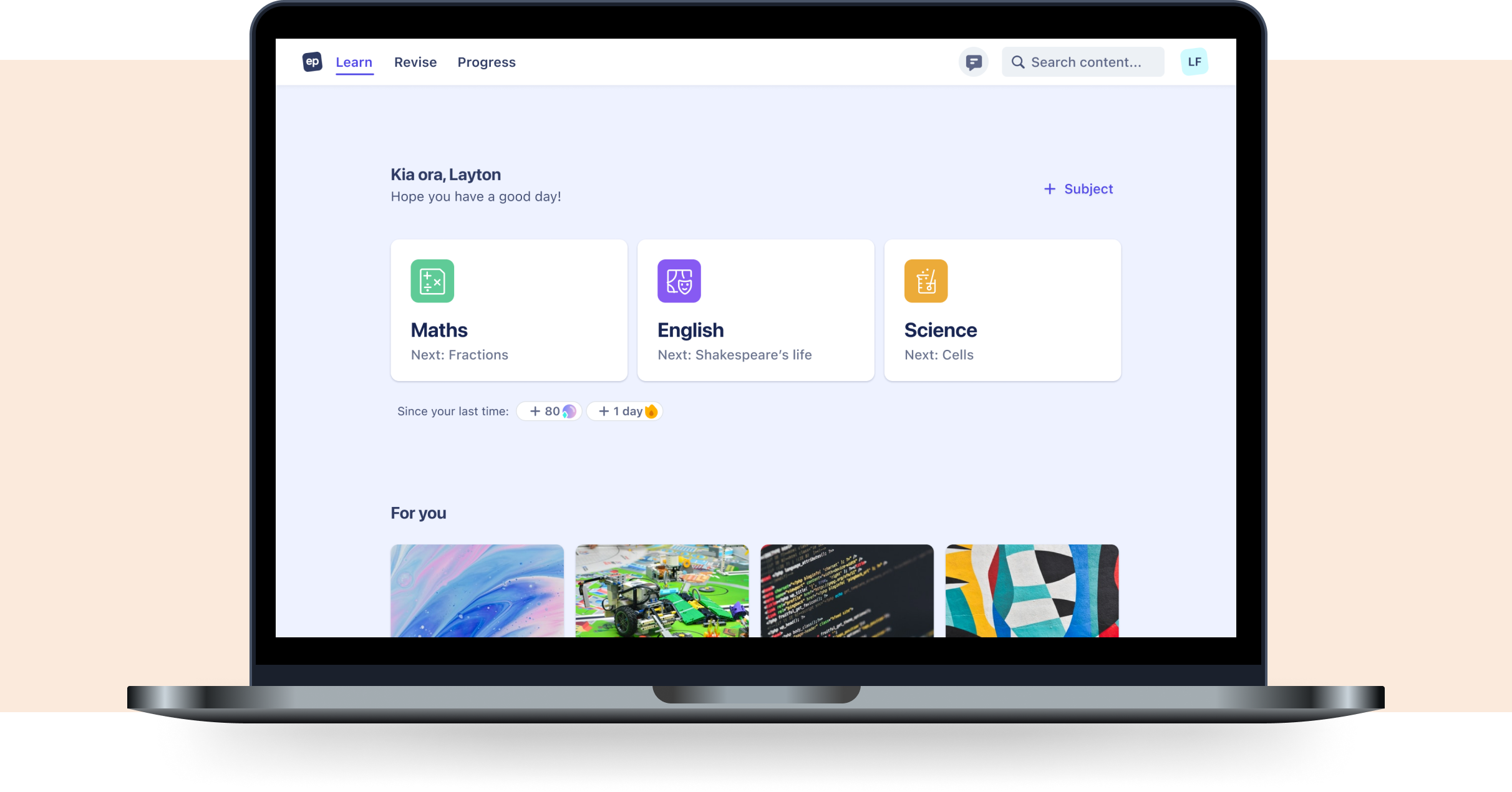
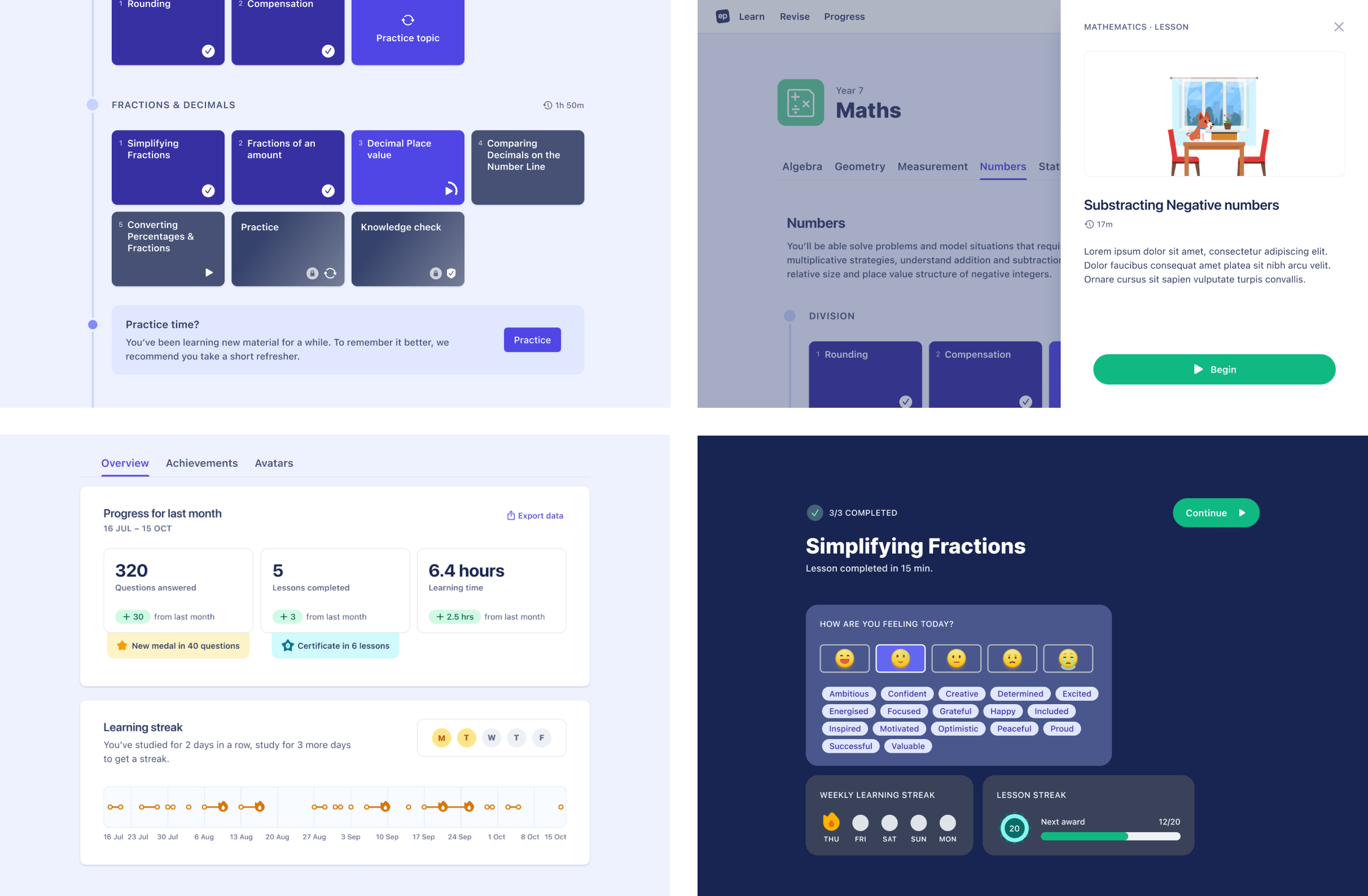
The project started off with a team of two: myself, a Product Designer, and a Product Manager. The Leadership posed the challenge of ‘adapting our existing tools for the Homeschooler or School-student extension (extra-curricular education) market’. It became clear quickly that the challenge lay somewhere else entirely – parent/guardian disengagement with the education system.
After the initial round of interviews with school leaders, school parents, homeschooling parents, and their kids we started to narrow down the challenges. We also became familiar with various family make-ups: two parents, single parents, grandparent caretakers, legal guardians etc. (Note: this case study will refer to all these groups as ‘parents’, however we were mindful to use the correct language to refer to particular user groups within the product itself.)
For me it became clear that the problem to solve was the breakdown in communication between 3 key participators in the student education process: teachers, students, and parents.
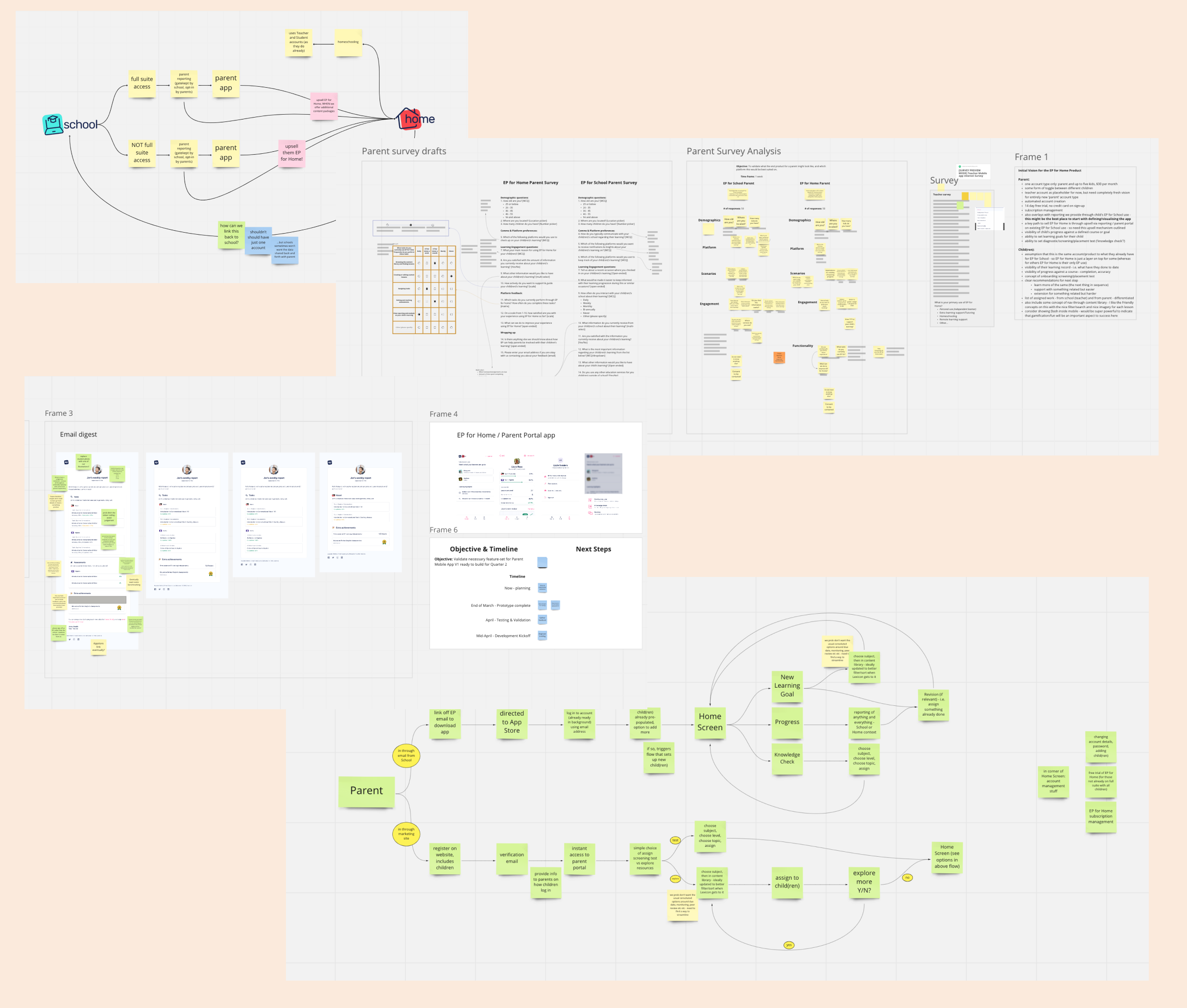
Due to the open-ended nature of the challenge, we chose to undertake blue-sky ideation. Business requirements were pushing us to adapt the existing suite of tools for the Homeschooler market, which we extrapolated to a key opportunity: more granular parent reporting on student progress. This led to a new team being stood up to drive this initiative, which we directed.
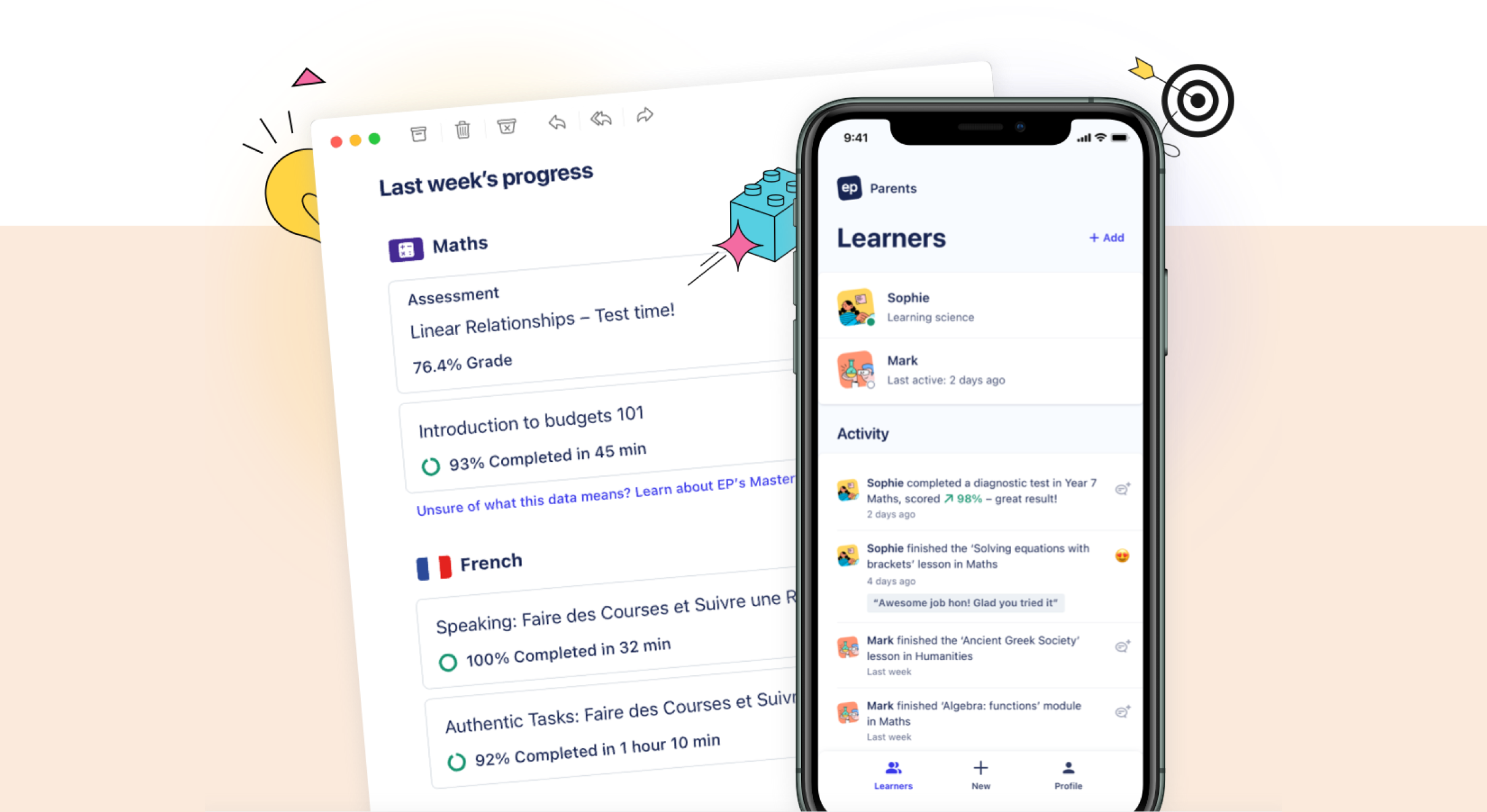
Synchronising teacher-student-parent progress communication across product suites proved to be a technical challenge which our code-base wasn’t set up to support. We decided to pivot to a standalone parent experience and chose to focus on a mobile platform. This was because mobile-available services are uniquely positioned to cut through challenges with lack of access or time, and our research showed an already high usage of mobile devices in the parent cohort. This also unblocked a set of technical challenges, as our team already had prior experience developing the iOS / Android Teacher app.
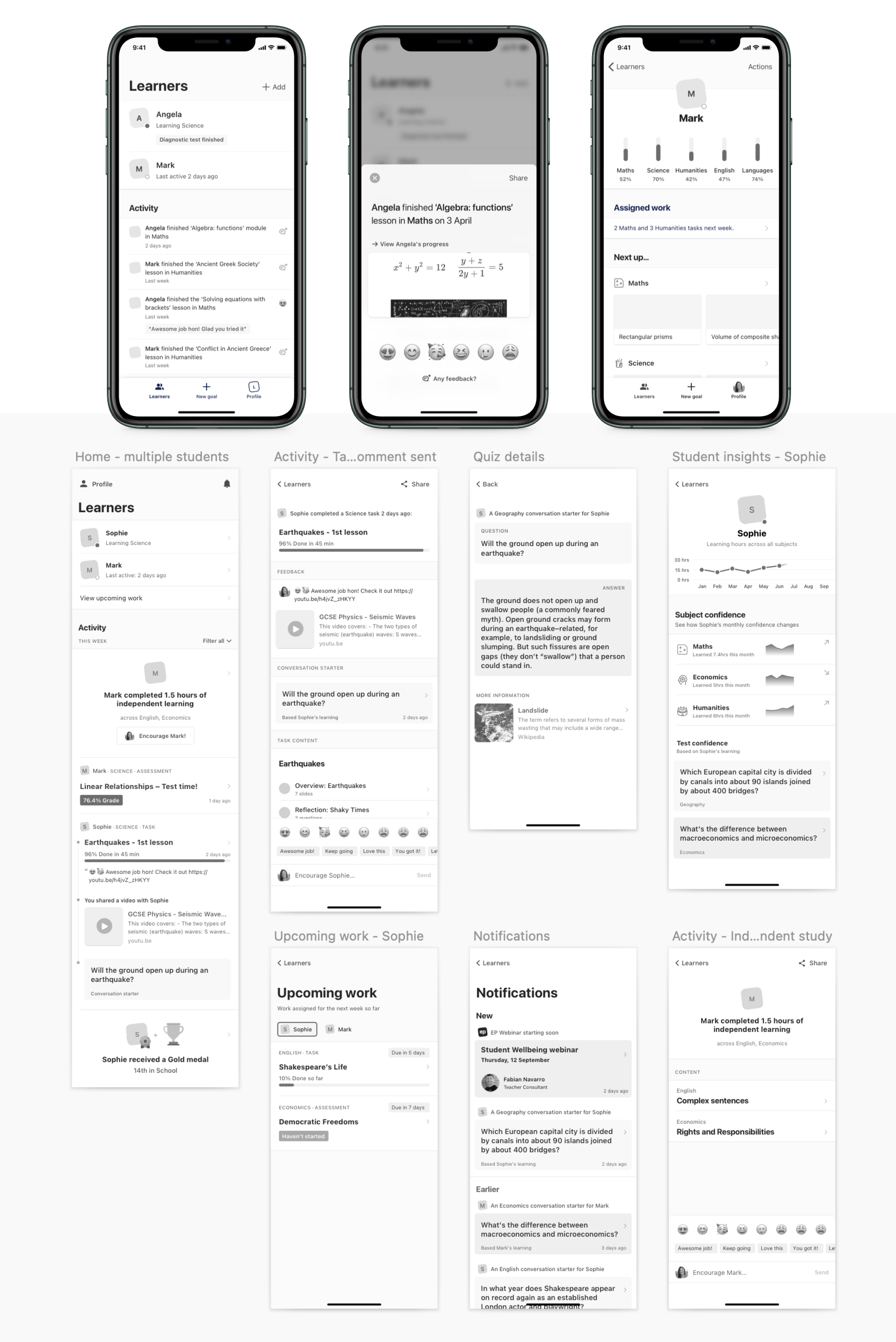
We conducted 3 rounds of remote user-testing using our mobile prototypes. I set up a remote testing environment on users’ personal mobile devices through Lookback and Zoom, and ensured the prototype behaviour matched the native app experience as closely as possible so we could elicit accurate feedback.
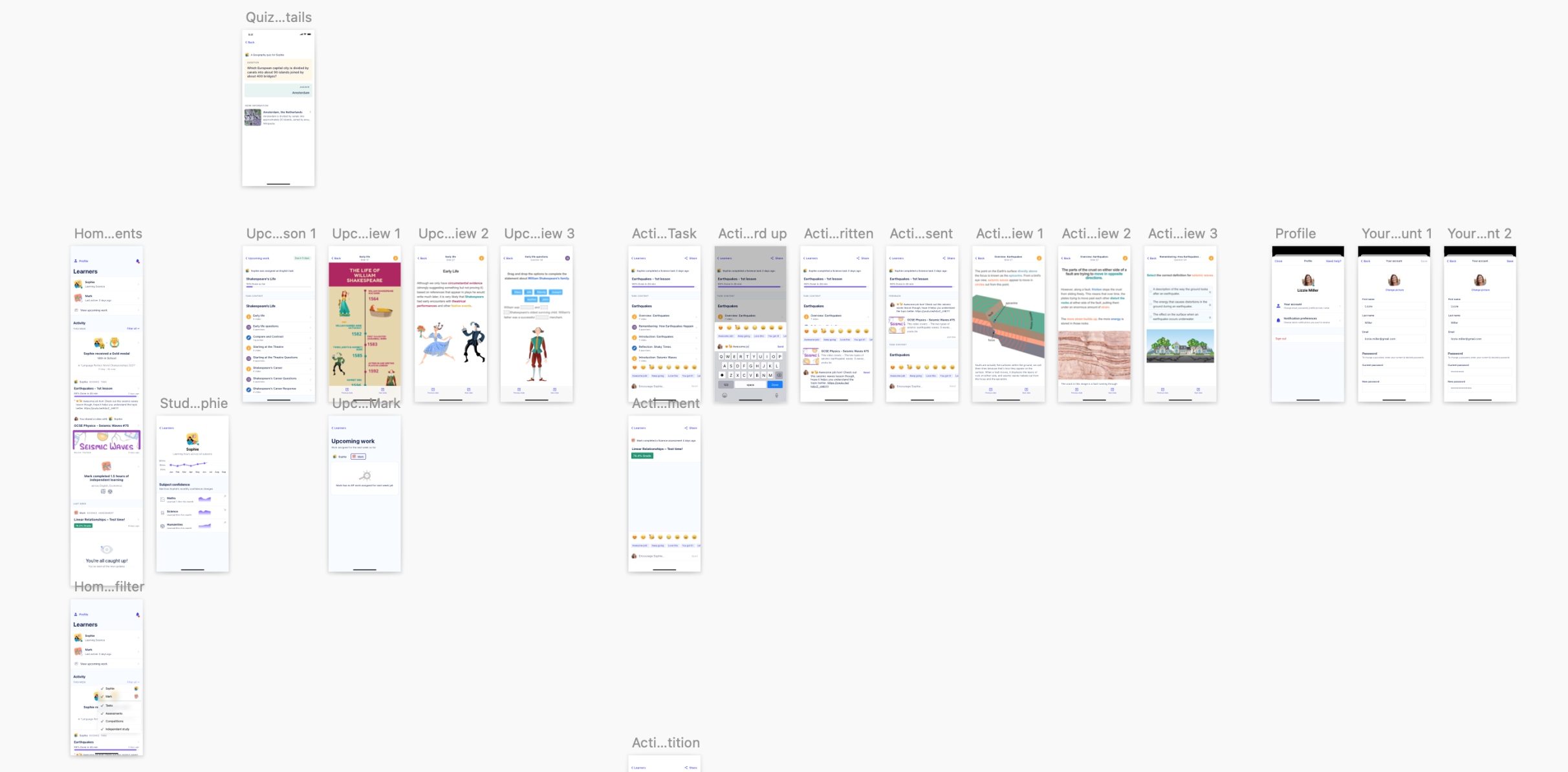
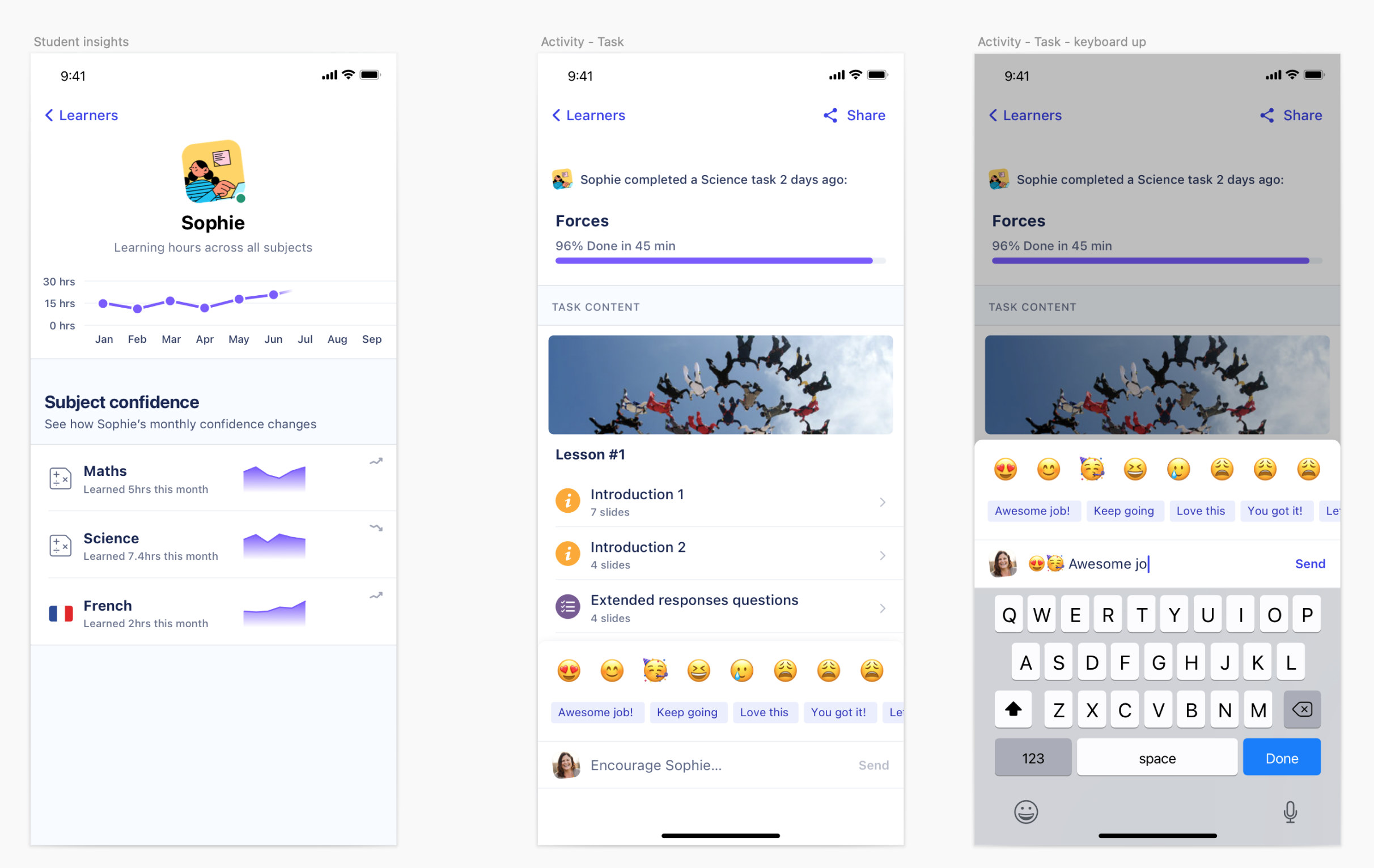
With these findings alone we convinced the leadership team to pivot and give us more time to figure out the uncovered challenge: lack of engaging parent content.
Based on our extensive research in the space and updated business requirements we chose to explore the idea of a responsive web app. We had to drop the mobile-only approach due to the increased concept difficulty.
This time the concept targeted not just parents, but also students.
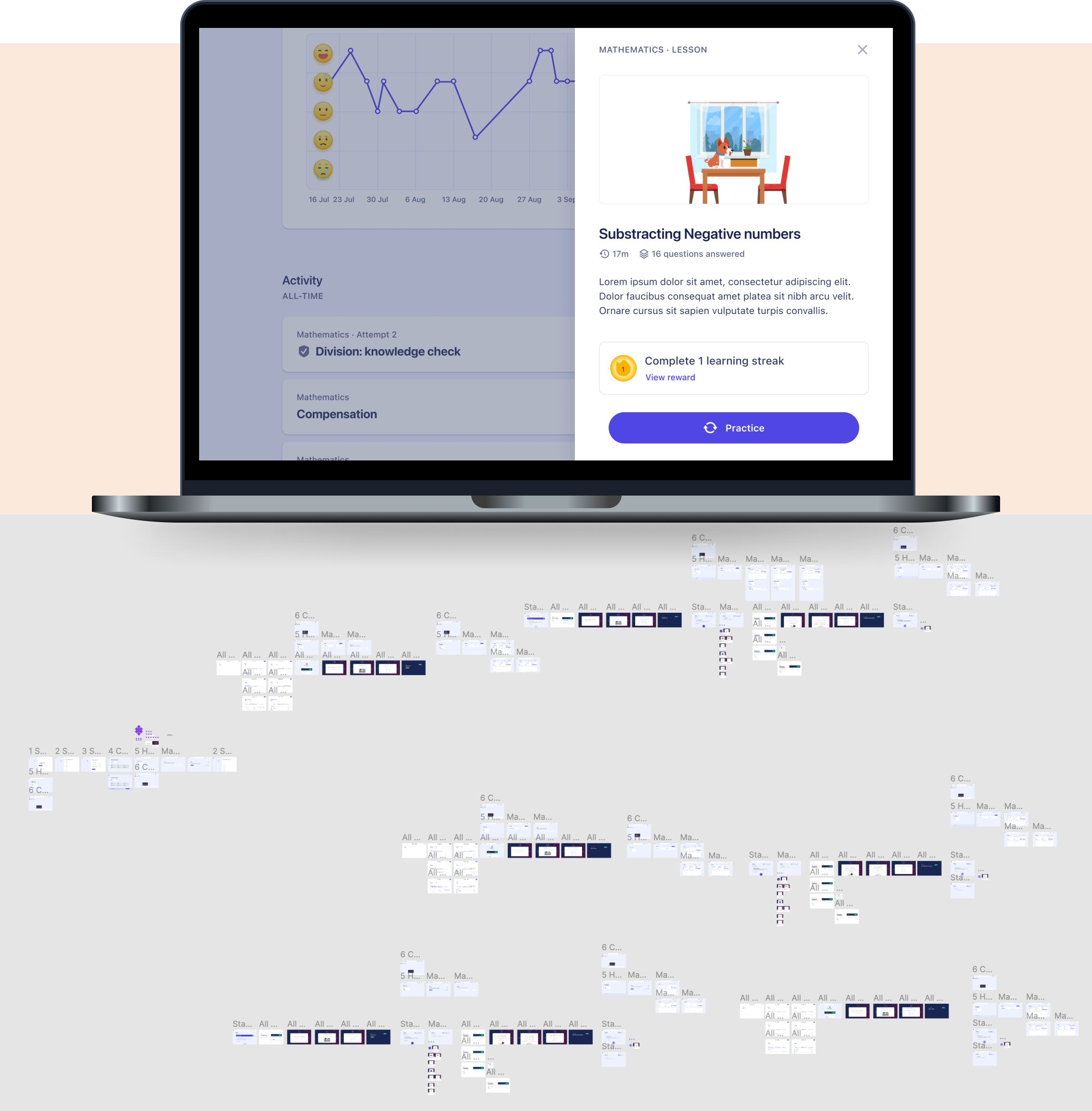
We decided to focus on student and parent engagement features and using the right motivational language for both cohorts.
We ran 3 more rounds of remote concept validation and usability tests using 2 interactive prototypes of student and parent experiences. Engaging around 25 participants, we tested:
Parents were excited about the self-directed courses because it minimised the dependence on their active involvement, and the kids (especially boys) responded with enthusiasm to the gamification aspects.
We received incredibly positive user feedback on the web app’s visual presentation – it was clean and functional, yet not devoid of personality which was key for younger students. Our team took that as a strong indication we were on the right track.
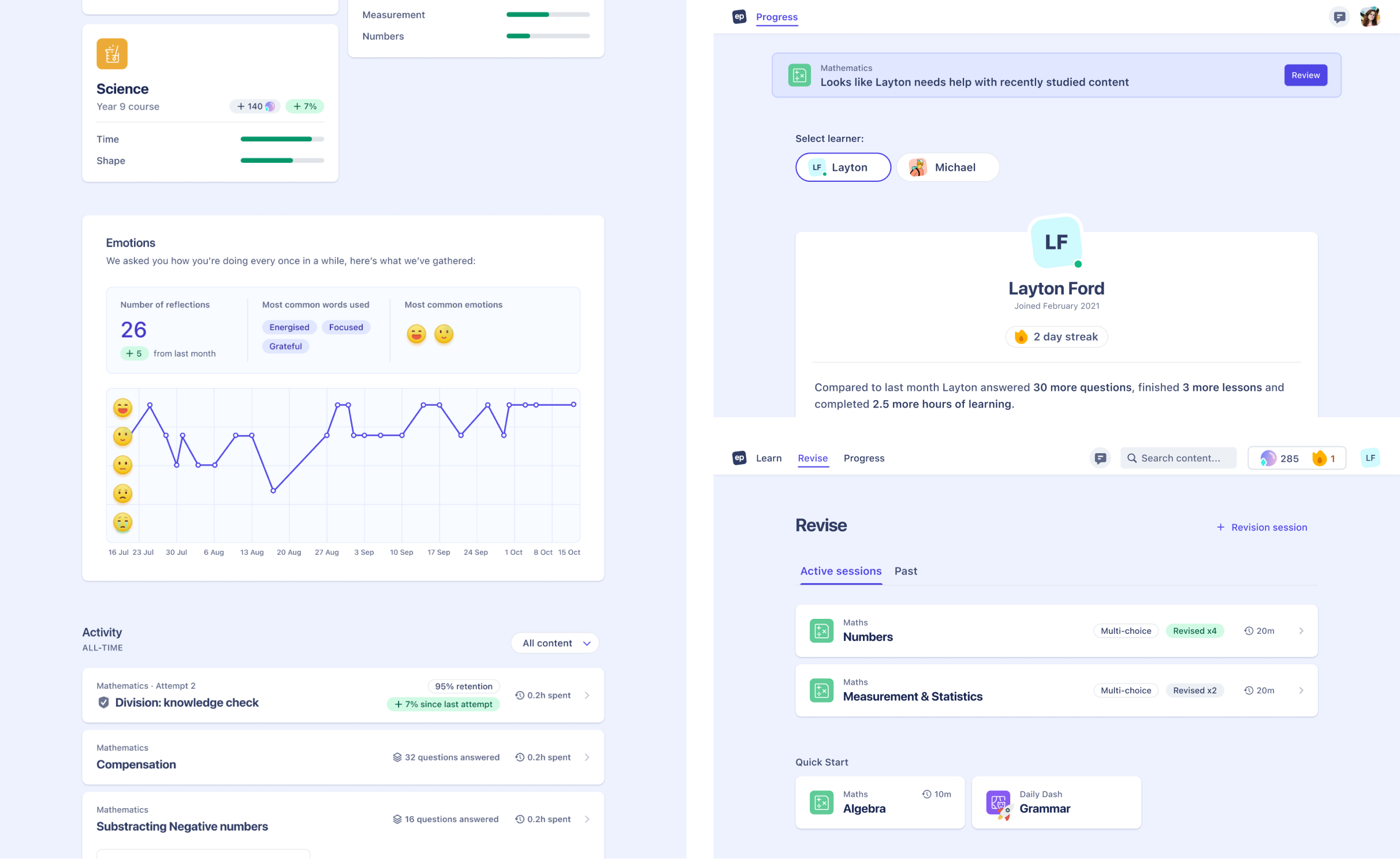
Ultimately we came close to finalising our concepts and presenting these to leadership. Ongoing ad-hoc user testing increased our confidence in the success of the product.
Unfortunately, a number of factors outside our team’s control resulted in the project stagnating and reaching an indefinite pause.
Reflecting on the project, it stands as a testament to our success in identifying core challenges, conducting comprehensive research, and meticulously addressing every query. My expertise in user testing deepened, enabling me to confidently lead extensive remote usability studies. Notably, engaging with homeschooling parents offered profound insights, enriching our ideation process with real-world complexities and interactions.
The exploration into game theory was particularly enlightening, revealing that effective gamification transcends conventional reward systems. It emphasized the necessity of integrating gamification as a foundational element of the user experience, avoiding superficial implementations that could lead to complexity or technical debt. This journey was not only a showcase of our problem-solving capabilities but also a personal evolution, highlighting the critical role of user-centric design and integrated gamification in enhancing product value.